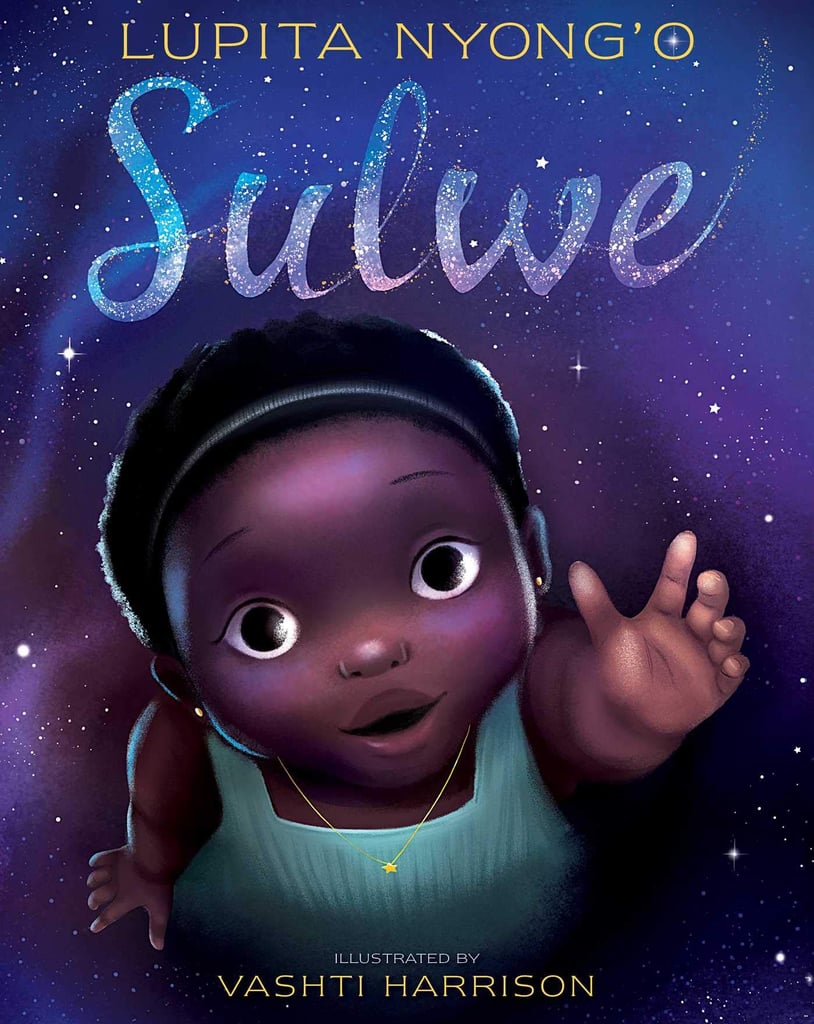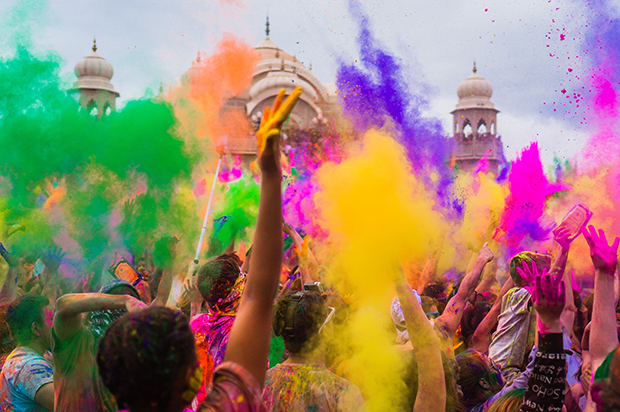Vashti Harrison

Vashti Harrison is an artist in many forms. She is a writer, illustrator, and filmmaker. She was born and raised in Onley, Virginia. Vashti currently resides in an apartment in Brooklyn, NY. She has attained her BA from the University of Virginia with a double major in Media Studies and Studio Art with concentrations in Film and Photography. Vashti furthered her education by receiving her MFA in Film and Video from California Institute of the Arts. At this time in her life, she began sneaking into classes that were held by people affiliated with Disney and Dreamworks. These experiences sparked a light within her, and motivated her to create the art she has up to this day.
Lived Experiences
Vashti Harrison grew up with a passion for drawing, but it was not until she took a trip to Trinidad (in her adult life) that she began to encompass her own flair on art. She came from a small town in Virginia, and she thought of herself as a homebody, but at the same time, she felt extremely driven to do well academically and in her field. Vashti got laid off at one point for how much she loved being home, but she took this opportunity to figure out what she wanted to do. Later on, she moved to Brooklyn in hopes to jump starting her career in illustration, which she did, but will always think of her home as Onley, Virgina. Vashti Harrison is a woman of color, who growing up, did not see characters that mirrored herself, or her lived experiences. Therefore, through her art, she illustrates characters who have unique curl patterns and melanin in their skin to represent the underrepresented. She would like to give little girls who are brown or black skinned the opportunity to see themselves in literature, to inspire them to have dreams of becoming something great, and the strength to love themselves- even though their skin or hair may be considered “different”.
Awards
Vashti Harrison won the 49th NAACP Image Awards in January of 2018. She is the 2016 winner of the Field Notes Official Selection of Best Documentary for her short film, Sixteen, at the Sydney World Film Festival.
Some of Her Works





The Illustration Process
Vashti Harrison, most of the time, digitally creates art using Photoshop on a Cintiq tablet or on the Ipad Pro on an app called Procreate. She enjoys taking a cinematographic approach to picture books. She loves beautiful images and elegant layouts. A reader may be drawn to her cinematographic art style that includes a lot of the texture (characters curl patterns, the silkiness of the characters skin, etc.). She also incorporates watercolor into some of her art, and the bright colors she uses are almost impossible to ignore. Readers can also be drawn the element of inclusivity. She depicts that all children can read her books, but her targeted population is children of color. Vashti Harrison wants children of color to recognize similarities between themselves and the characters of the books. Often times, the characters in her books learn a positive message about self-love, or provide information on successful and strong people of color in America’s history. Vashti Harrison gets inspired by a number of things, and will take a mental note of what something looks like, or will take a picture of it/write it down, to keep it as an idea later on. She has done challenges on social media such as completing an illustration a day, and has visited works of art for inspiration such as Vincent Van Gogh.
Watch the following YouTube clip to see how Vashti Harrison uses Procreate to sketch out her work when she’s on the go, or wants that authentic “pen-to-paper” feeling:
Why Vashti Harrison?
A better question to ask is- why not Vashti Harrison? Vashti Harrison is extremely relevant within the literacy classroom. Educational environments need to provide diverse literacy opportunities for all students, and Vashti Harrison can help schools do so. Vashti Harrison positively represents children of color in many of her illustrations. Incorporating books with Vashti Harrison as an illustrator can help students to see reading as mirrors, windows and sliding glass doors. It is essential for all students, and their lived experiences, to be represented within literature. This type of classroom practice will help all students to have a better understanding of the world.
https://www.vashtiharrison.com/about
One Way To Teach: Festivals of Color (Elementary School)
Step 1: Read the book aloud to the class. Think aloud as you are reading to promote critical thinking in students, and future discussion.
- When looking at the cover, say to yourself: “Wow the cover is so bright and colorful. I also see some beads in the corners and pretty patterns around the letters of ‘colors’. The title is “Festival of Colors”…I am not sure what that is.
- On the first page, say to yourself “Guavas and lotuses ripen or bloom once Spring is about to arrive… it looks like the author is trying to tell us that Spring is about to begin. I also see that the Festival of Colors is from the Indian culture, and is also known as ‘Holi’. Let me keep reading to find out more about ‘Holi’.”
- On page six, say to yourself: “I wonder why they are collecting so many flowers. I notice the author keeps pointing out the colors of the flowers so that must be important”.
- On page eleven, say to yourself: “I notice all of the people in the pictures are carrying the colored powder they made from the beautiful flowers… I wonder what they are about to do”
- On page thirteen, say to yourself: “When the character’s are saying “Holi, Hai!” it reminds me of when my family comes over on Christmas day and say “Merry Christmas!” Everyone looks like they are smiling in this picture… it looks like they are very happy”.
- After reading the last page of the book, turn to the students and ask them to turn and talk to their elbow partners and discuss if they celebrate Holi or if they know of anyone who does.
Step 2: Show students real-life pictures of Holi, and prompt the class to share discussions they had with their elbow partners. What did they already know? What did they learn? Do they celebrate Holi?

https://player.fm/series/global-fighters/holi-festival-of-colors (podcast)
Step 3: Provide students with a list of festivals or holidays from around the world. Explain they will be researching one of them for the next few weeks and will create a digital movie (visual-photographs, videos, audio- music, podcasts) from their findings that will be presented to the class. Ask them to pick a festival or holiday that they do not celebrate or have not heard of. Explain to students that they may find a festival or holiday of their interest as well.
Step 4: Provide them with the supports necessary to create a digital movie such as explaining how to use specific software, providing examples of what the end result may look like, allotting class time to use the computer to conduct research and begin creating their movie, etc.
Step 5: Have students present their digital movies. Engage in discussion after each movie so students can share any ideas that popped into their head, and things they may have learned about.
This book would pair well with What Do You Celebrate? Holidays and Festivals Around the World by Whitney Stewart and Christiane Engel. This book could easily (and should) be paired with a social studies lesson on India. By reading this book, and thinking-aloud, students will begin to carry this skill to all subjects. Thinking-aloud will help for them to become critical readers.
References
Abari , Tonya. “Vashti Harrison’s Children’s Books As Mirrors, Windows, & Sliding Glass Doors.” Romper, 23 Sept. 2019, http://www.romper.com/p/vashti-harrisons-childrens-books-as-mirrors-windows-sliding-glass-doors-18790824.
Harrison, Vashti. “Vashti Harrison.” 2017, http://www.vashtiharrison.com/.
Russo, Maria. “Vashti Harrison Lets the Light In.” The New York Times, The New York Times, 14 Oct. 2019, http://www.nytimes.com/2019/10/14/books/vashti-harrison-sulwe-brooklyn-studio.html.
